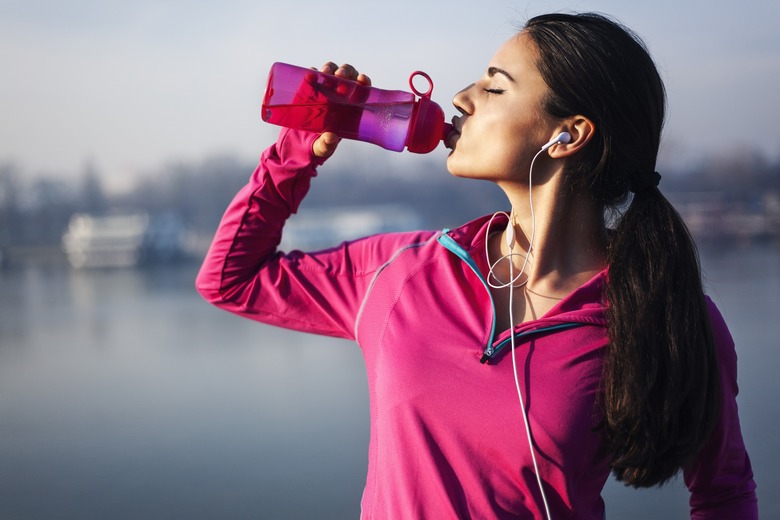The Type Of Water Bottle You Should Buy If You Don't Want E. Coli
Not all water bottles were created equal, and as it turns out, some of them have a much higher probability of infecting you with E. coli than others.
We really thought reusable water bottles were the healthier choice, too. With all the BPAs, DDTs, and other obscurely-titled chemicals lurking in layers of plastic containers, the dishwasher-safe, metal, BPA-free reusable bottles seemed like a promising solution.
But as it turns out, we all have far worse things to worry about with our water than just what chemicals could get released from the bottles' sides. A study conducted by Treadmill Reviews discovered frightening amounts of bacteria on the mouthpieces of athletes' water bottles.
Ninety-nine percent of these bacteria were classified as harmful. Over 60 percent had serious potential to make you sick. There was even a noticeable amount of E. coli in the mix. (E. coli is the bacteria strain often found in fecal matter of humans and animals. It causes violent food poisoning episodes.)
There is some good news buried in all of this gross data: Certain types of water bottles aren't as infested as others.
Water bottles with a slide top contained over 933,000 colony-forming units of bacteria, or CFUs. That's almost a million. One million reproducing, proliferating organisms festering on the mouthpiece of your water bottle, waiting for your lips every time you take a sip. To give you some perspective, toilet bowls have 172 CFUs per square inch — meaning that slide-top water bottles are over 5,000 times more contaminated.
However, water bottles with a twist-off cap contained closer to 159,000. While that's still not a particularly favorable statistic, it's a significantly lower number. It's also a significantly lower risk.
The type of water bottle with the smallest risk, however, had a straw top. To keep your mouth safe and your stomach from upset, opt for a water bottle with a straw. Even better? Swap out the straw regularly for the most effective cleanse. (Straws are difficult to clean, and bacteria could grow on the inside surface.)
We recommend you add that to the list of precautions you take to keep your kitchen, and all the food you're eating, as safe as possible.
